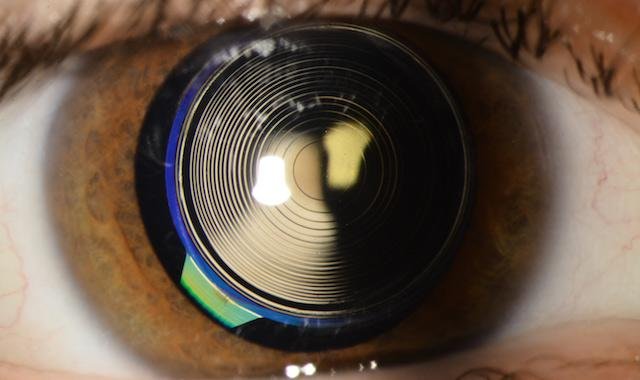Multifocal IOLs for Cataract Surgery
When your or a loved one has cataract surgery performed, you have the choice of several different lens types to replace the natural lens which has become cloudy and difficult to use. There are monofocal IOLs, which are perfect for some but there are also specialized lens implants that can help your or your loved one to flourish in new ways, enjoying relaxing activities like reading, painting, model-building and sewing without reading glasses. These lenses are called multifocal IOLs.
How Multifocal IOLs Work
Multifocal lenses are advantageous to anyone who has reduced near vision from age.
Humans are able to see long distances and close up by “zooming” in and out with the lens and the cornea. To see things up close, the cornea and lens contract, making a thick ovular shape that slightly magnifies the view of nearby objects. To see things far away, the cornea and lens relax, forming a thin ovular shape that lets light spread out from far away. As we grow older, it becomes more difficult for the eyes to contract, and our near vision becomes more blurry. This is a common condition called presbyopia. In fact, it’s not just common, presbyopia is believed to be affected by 100% of people as they reach their 40s and 50s.
Multifocal IOLs help to restore near vision by providing near, intermediate, and distance vision all at once, reducing some of the need for the eyes to focus. The very center of the lens provides distance vision, while the rim provides near vision. The experience is a lot like using multifocal glasses, where people look down in order to read and look forward in order to see objects at a distance. The change takes time to get used to, but it can be liberating to finally be able to see clearly no matter the activities you are enjoying.
Using reading glasses is still an option with multifocal iols, and in fact many people keep reading glasses on hand even after cataract surgery. The difference is that many near-vision activities are easier with multifocal IOLs, while others can still benefit from the extra help of multifocal IOLs.
All multifocal lenses have the potential to cause vision issues including glare, halo effects, and starbursts particularly in the dark. These visual effects may be dangerous while driving at night or performing other activities in the dark. Shanbom Eye Specialist carefully selects IOLs that have been associated with fewer instances of these effects.
Depending on your needs, we may recommend multifocal lenses that excel in unique ways.
Alcon Acrysof Panoptix Trifocal IOLs
Released in 2019, the Acrysof Panoptix Trifocal IOL was the first FDA-approved trifocal lens. In the conclusion of the FDA study before these trifocal lenses hit the market, more than 99% of PanOptix patients said they would implant the same lenses again. As a trifocal IOL, the lens provides near, intermediate, and distance vision simultaneously.
Tecnis Symfony Multifocal Toric IOLs
As not just a multifocal IOL but a toric IOL as well, the Tecnis Symfony Multifocal Toric IOL provides vision correction for those with both presbyopia and astigmatism. Astigmatism is a common vision problem that causes impairments in both near and distant vision due to the uneven shape of the natural lens and/or cornea. If you or a loved one have astigmatism, a toric lens implant is needed to both fit the eye comfortably and securely and provide wide-spectrum vision correction.
With multifocal IOLs and with any other artificial lenses, the IOL must be placed by a professional with dedicated equipment to ensure the placement is comfortable, secure, and optimized for maximum vision improvement. IOLs are most often implanted following cataract surgery. Dr. Steven A. Shanbom M.D. is a professional eye surgeon in Berkley, Michigan with over 30,000 successful vision correction surgeries. Get started with your cataract surgery consultation to find the perfect IOLs for you or your loved one.



